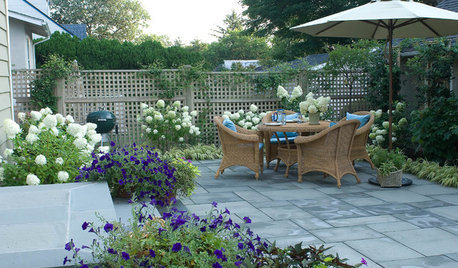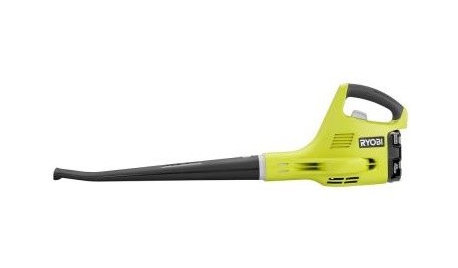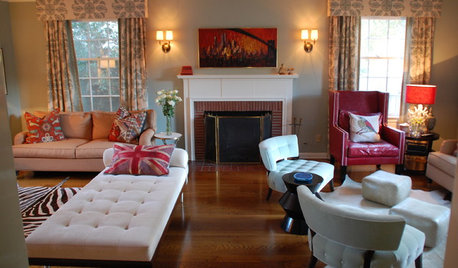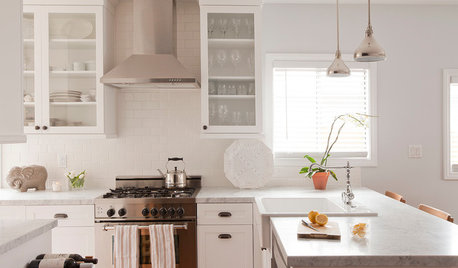Blueberry Soil Prep / Spacing
goodground
18 years ago
Related Stories

GARDENING GUIDESGreat Design Plant: Grow Blueberries for Their Fruit and More
Eastern gardeners should consider growing blueberry plants for their delicious fruits, bee-friendly spring blooms and brilliant fall foliage
Full Story
EDIBLE GARDENSSummer Crop: How to Grow Blueberries
Plant blueberries in spring or fall for garden beauty through three seasons — and a sweet superfood in summer
Full Story
GARDENING GUIDESHow to Prep Your Ground for a Healthy New Lawn
Seed or sod that falls on weedy, lumpy soil is a wasted effort. Follow these steps to ensure that your new lawn will thrive
Full Story
GARDENING AND LANDSCAPINGGet It Done: Clean and Prep the Patio
Haul out the hose and bid cobwebs farewell. It's time to renew your outdoor room for relaxing, dining and entertaining
Full Story
FALL GARDENING8 Must-Have Tools for Fall Backyard Prep
Autumn outdoor work feels overwhelming, but these handy tools can keep it under control
Full Story
MORE ROOMSEntertaining at Home: A Host of Party-Prep Ideas
Having company for Passover or Easter? Here's how to get your furniture, dishes, centerpieces and more ready for guests
Full Story
FARM YOUR YARD6 Things to Know Before You Start Growing Your Own Food
It takes time and practice, but growing edibles in the suburbs or city is possible with smart prep and patience
Full Story
FALL GARDENING5 Ways to Put Fall Leaves to Work in Your Garden
Improve your soil and yard the organic way with a valuable garden booster that grows on trees
Full Story
GARDENING GUIDESNew Ways to Think About All That Mulch in the Garden
Before you go making a mountain out of a mulch hill, learn the facts about what your plants and soil really want
Full Story
REMODELING GUIDES10 Things to Do Before the Renovation Begins
Prep and plan with this insight in hand to make your home remodeling project run more smoothly
Full Story







Ron_B
Ron_B
Related Professionals
West Milford Landscape Architects & Landscape Designers · Elwood Landscape Architects & Landscape Designers · Saint Matthews Landscape Architects & Landscape Designers · Athens Landscape Contractors · Belmont Landscape Contractors · Bloomington Landscape Contractors · Choctaw Landscape Contractors · Commack Landscape Contractors · Ellicott City Landscape Contractors · Fairfield Landscape Contractors · Florham Park Landscape Contractors · Fort Mill Landscape Contractors · Hawaii Landscape Contractors · Pine Hills Landscape Contractors · West Chicago Landscape ContractorsgoodgroundOriginal Author
ericwi
barrie2m_(6a, central PA)
goodgroundOriginal Author
lwood321
kiwinut
markwebb
icugrow2
zhangqj
markwebb
railroadrabbit
railroadrabbit
goodgroundOriginal Author
murkwell
goodgroundOriginal Author
railroadrabbit
railroadrabbit
sweet_lemon
aunt_millie
sdrone
gonebananas_gw
kiwinut
sdrone
Kristiina DiOrio
gonebananas_gw
sdrone
sqftgarden_in_wnc